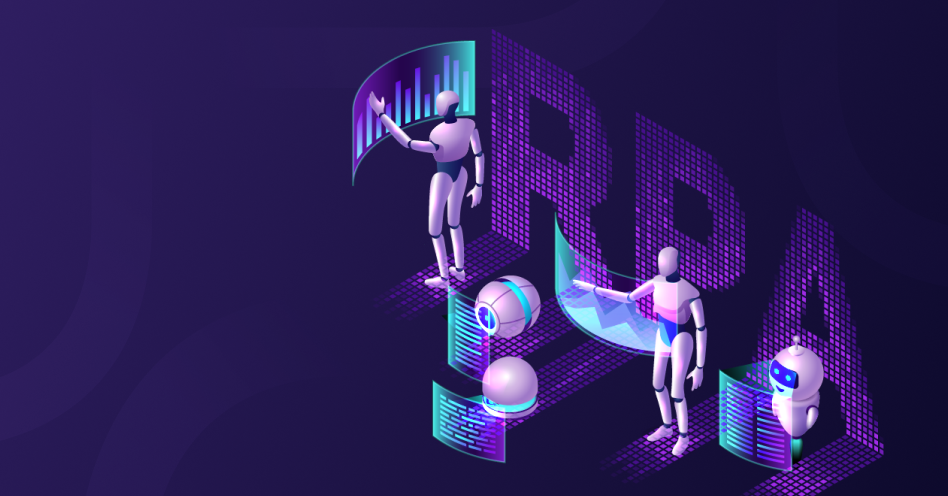Robotic process automation (RPA) is a new cutting-edge technology deployed in various industries to automate tasks and processes. One of the most promising applications for RPA is in customer service.
By automating repetitive and mundane tasks, RPA can free up customer service representatives (CSRs) to provide higher levels of customer service. In addition, RPA can better assist the improvement of First Call Resolution (FCR) rates and Customer Satisfaction (CSAT) scores.
This article discusses how RPA can improve customer service. We will also provide some examples from some companies that have used RPA successfully to optimize their customers’ experience.
What is RPA?
RPA is a technology that allows software robots to automate monotonous processes. The software robots are designed to mimic the actions of a human user, such as opening applications, filling out forms, and extracting data.
Thus, RPA can be used to automate various tasks, including those for customer service. For example, an RPA software robot can be configured to handle customer inquiries received through a company’s website or social media channels. The software robot can provide a response based on pre-defined rules and guidelines or then route the inquiries to an appropriate CSR.
Benefits of Using RPA for Customer Service
This new technology has a significant impact on customer service. Here are some of the benefits of using RPA for customer service:
- Improved Customer Service Levels: By automating repetitive and mundane tasks, CSRs are able to provide higher levels of customer service, such as handling more complex inquiries while also providing personalized services. In addition, this automation can help to improve First Call Resolution (FCR) rates.
- Increased Customer Satisfaction Scores: In addition to improved customer service levels, automating customer service tasks can also lead to increased customer satisfaction scores because RPA can help to reduce waiting times and resolve issues faster.
- Seamless Integration with Other Systems: RPA software robots can be seamlessly integrated with other systems, such as Customer Relationship Management (CRM) and Enterprise Resource Planning (ERP) systems. The integration results in a more efficient workflow and ensures that customer inquiries are handled in a timely manner.
- Cost Savings: Automating customer service tasks can also favor cost savings for businesses because it reduces the need for human intervention, which can free up resources that can be stationed elsewhere. Moreover, RPA can improve efficiency and accuracy, leading to more cost savings.
- Flexibility and Scalability: RPA is highly flexible and scalable, which means it can be easily adapted to changing business needs. Further, RPA software robots can be quickly deployed to new customer service channels, such as chatbots and virtual customer assistants.
How RPA Has Improved Customer Service: Examples
RPA is now a trend in the customer service industry. Businesses such as call centers and e-commerce companies are now using RPA software robots to automate their customer service tasks. Here are some examples of how RPA has been used:
Cobmax Call Center
A case study by IBM demonstrated that Cobmax, a sales call center, utilizes an IBM-built RPA service that cuts back-office operations by half. What is more, the company is able to sell 20,000 products each month and create client reports in less time.
Cobmax uses RPA bots to retrieve clients’ data such as demographics, purchases, past complaints, and tickets and forwards them to the customer care representative ahead of time to assist them in anticipating customer questions, allowing them to resolve issues efficiently.
Wrk
RPA bots or AI-based customer care chatbots may both gather and enter issue information into the ticket system. For instance, Wrk’s Ticket Routing & Escalation system automates customer support ticket routing.
The program uses rule-based parameters and machine learning to automate ticket resolution: it identifies the issue, searches the knowledge base for an acceptable solution, and chooses the best internal routing. Finally, it sends an automated follow-up mail to confirm the resolution.
Using this routing system, Wrk can automatically search and suggest solutions to common customer issues, as well as escalate tickets when necessary, helping reduce the number of support calls and improving customer satisfaction scores.
IQOR’s Omnichannel Support
IQOR system was designed to provide customer support through multiple channels, such as phone, chat, and email. The system was is able to route customer inquiries to the appropriate channel and CSR automatically. In addition, the system provided real-time updates to customers on the status of their inquiries.
This has helped improve IQOR’s efficiency as 38% of calls were automated digitally, and $180,000 annualized savings in FTE were achieved. This feat was accomplished by identifying and routing millions of contacts on the appropriate channels in the first year.
Final Thoughts
RPA is already becoming a popular solution for businesses in the customer service industry because it can help improve efficiency and accuracy as well as reduce business costs. Additionally, RPA is highly flexible and scalable; it can be adapted easily to changing business needs.
If you are looking for ways to improve your customer service, RPA may be the right solution.











